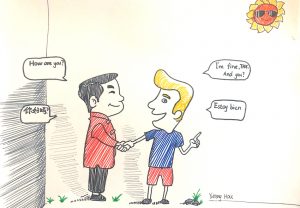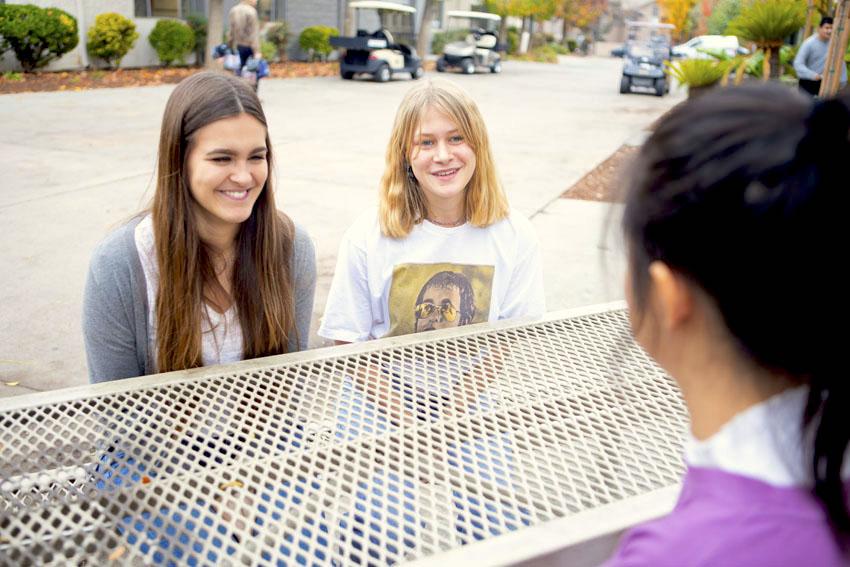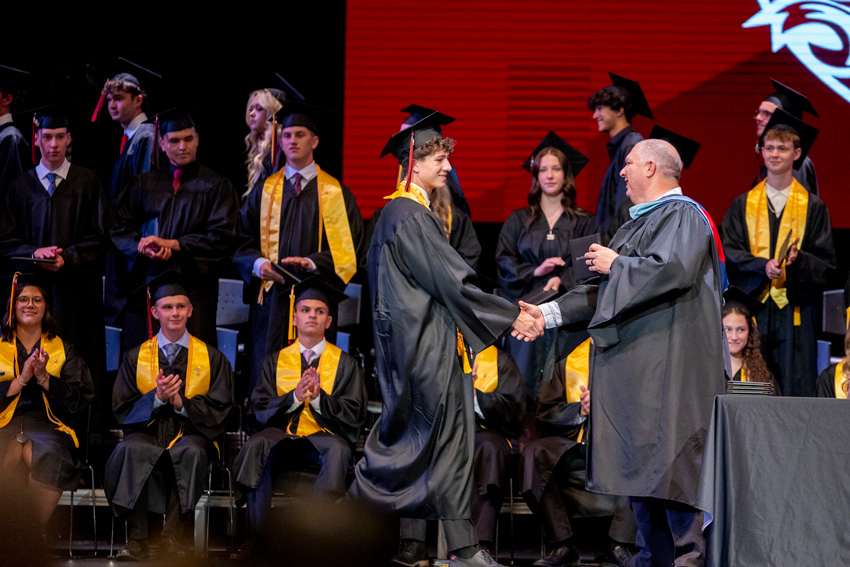Bilingual students, professionals share linguistic observations

Bilingualism isn’t unusual, in fact, it often becomes important now that people should at least understand and partially know a second language.
According to a Puerto Rico Report article, “Bilingual America”, nearly 40% of the world population speak fluently and adeptly use two languages.
American Community Survey (ACS) collected data that shows that more than 60 million Americans, about 20% of the population, now speak a language other than English in the United States.
There are many benefits to learning foreign languages. It often provides a competitive edge in career choices for teenagers in the future, and it may cultivate people’s minds in improving memory, problem-solving and critical thinking skills.
Learning the local language when visiting or moving to another country often helps to appreciate the culture in ways not otherwise attained. As people explore a new language, they naturally draw attention to the culture. Individuals proficient in a second language can help navigate the world as a global citizen, assessing foreign media and news, to better understand a new culture.
The book “The Impact of Globalization on CrossCultural Communication” by Lowell C. Matthews and Bharat Thakkar indicates that the world is an increasingly globalized place where individuals are communicating among and between multiple cultures each day.
Using the same language allows people to build on a dialogue, furthering developing relationships.
International student Amanda Phan, ’21, shares her opinion on studying English in the United States.
“Communication is an important thing while living in another country,” Phan said; “especially when I traveled to the United States from Vietnam. Fluency in English gave me a huge advantage in studying and also in life.”
In the following podcast, Amanda Phan speaks of the importance of learning the native language of the country you are in when studying aboard.
Languages not only help to dig into another culture, but it also helps everyone to express their own civilization and deeper meaning.
A researcher named Nairán Ramírez-Esparza asked subjects to write a 15-minute description of their personalities. They found that, while writing in Spanish, the Mexican Americans talked about themselves concerning their families, relationships, and hobbies. In English, they spoke of their achievements, college and daily activities.
Ramírez-Esparza ascribes the changes in personality and the different focus on values to the way that language “primes” behavior.
“This phenomenon reflects the tendency of bicultural individuals to change their interpretations of the world, depending upon their internalized cultures,” Ramírez-Esparza said.
In a TEDWomen 2017 talk, Lera Boroditsky a cognitive scientist from the Unites States, explains how languages shape the way we think.
As Boroditsky explains, language cannot be separated from the cultural values of that language. We carry different cultural values of the languages we know.
The international program coordinator for Fresno Christian High School, Brooke Stobbe, is bilingual in English and French. She explains the perceived change in personality in speaking these two languages.
“When I speak English,” Stobbe said, “I am a very enthusiastic, really expressive person.”
When living in France, Stobbe realized in large rooms full of people like the teacher’s lounge or cafeteria, or even at the Saturday market, there was only a low murmur of voices talking, not a noisy hubbub like what she experienced In the United States.
In order to adapt to the new environment, Stobbe tries to maintain a much more calm demeanor. She speaks softer and tries not to overwhelm the listeners with too many facial expressions. While speaking French, she describes herself as “calm” and “collected.”
“It’s like I would switch gears when switching languages,” Stobbe said.
In the following podcast, Serena Zhao talks to Brooke Stobbe about changes in personality when focusing on two different cultures.
Similarly, Karoline Sandberg, ’21, hailing from Denmark, is bilingual in Danish and English. She describes herself as more outgoing when speaking English.
“In Denmark, people don’t normally greet strangers. But here it is very common to say ‘hello’ and ask how is their day going,” Sandberg said.
Some international students are shocked when they first get into contact with English. An international student from China, Kenneth Hu, ’20, shares the culture differences embodied when speaking English and Chinese.
“When speaking English, I can express appreciation easier,” Hu said. “People in China don’t normally express their appreciation (love languages) to their family. My parents don’t say they love me. Instead, they do everything to show me they love me.”
However, he believes sports equalize language and culture barriers. When playing team sports, such as soccer and basketball, people have to communicate with their teammates. No matter in what country, “You have to talk to everyone and express your feelings in sports,” Hu said. “Sports bring people together.”
In the following podcast, Hu talks about culture differences embodied in Chinese and English.
Often, reserved and introverted traits can be embodied in language as well. In China, it is common for people not to say “please” and “thank you” to their family. While it seems to be rude in the United States, it is not disrespectfully intended.
Coming from Brazil in South America, senior Laura Rauscher mentions the culture differences embodied in Portuguese and English. Rauscher mentions that when she first came to the United States, many American peers thought Portuguese is Spanish because it sounds similar. However, most of the words in Portuguese are the same as Spanish.
“When I came to America, I noticed that people are very formal,” Rauscher said. “They use ‘Mr. ’and ‘Mrs.’ all the time. In Brazil, when we go to our friends’ house, we call their parents ‘uncle’ and ‘aunt’ to show friendliness.”

Rauscher went on to explain the culture differences shown in body language when greeting people.
“If introducing myself to others, I would kiss them on the cheeks and give a front hug,” Rauscher said. “Coming to America and noticing sides hugs are known as proper hugs, I took a while to get used to a more formal way to greet.”
Different languages often represent different aspects of culture as well as connect opposing contexts. The use of language constitutes individual unique identities. Bilingualism can give learners bicultural identities, which often widens their perspective of the world.
For more articles, read Cindy Lane invites visitors to Clovis area for Christmas displays or Farmer, professional observe environmental impact on The Valley’s water, farming.
Serena Zhao can be reached via email.





Silva Emerian • Dec 12, 2019 at 8:27 am
I loved this article – this is such an interesting topic! I loved reading about the cultural differences reflected in the languages represented at FCS. Being Armenian, I tend to speak much louder in my native language than when I speak English. And I related with Laura – in Armenian everyone is your aunt and uncle! Keep up the great work!